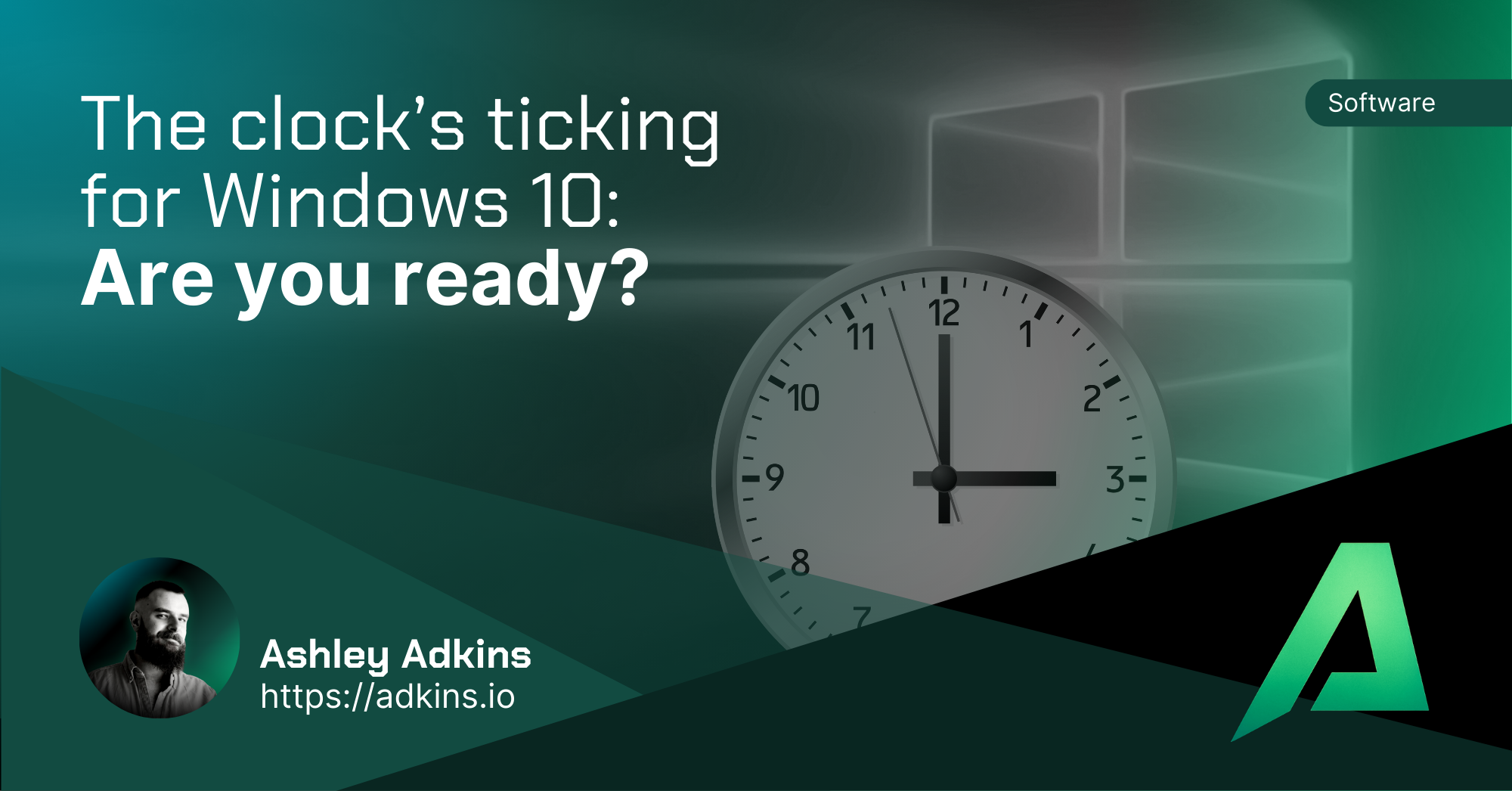Don’t wait for the Windows 10 apocalypse.

Sundays are for catching up - a long read, a good brew, maybe tackling the little things you’ve been putting off. If you’re running a business on Windows 10, there’s a bigger “little thing” quietly ticking down in the background.
Microsoft has already circled a date in the calendar: 14 October 2025. That’s when mainstream support for Windows 10 ends. No more security updates, no more bug fixes, no one at Microsoft to call when something goes wrong. Your PCs will still boot up on the 15th, but from that point on they will become a softer target for malware and ransomware. When you’re trying to keep your organisation running smoothly, that’s a worry you don’t need.
You’re not alone if you haven’t moved yet. As recently as December 2024 Windows 10 was still running on 62.7 percent of desktop computers; Windows 11 accounted for just 34.12 percent. Even by July 2025, almost 43 percent of PCs worldwide still used Windows 10. That means a huge number of businesses are staring down the same deadline. It’s tempting to think “we’ll deal with it later,” but later always turns up faster than you expect.
Why Staying on Windows 10 Isn’t Safe
I sometimes hear people say they’ll keep Windows 10 because “it still works fine.” Technically, it will. The real issue is that unsupported software stops receiving patches and cybercriminals love unpatched systems. In the five years up to 2023, ransomware attacks rose by 13 percent and the average cost of a ransomware incident hit $1.85 million per case. That figure includes the ransom payment, the cost of recovery and the indirect loss of customer trust. On top of that, the average downtime after an attack is 24 day. Imagine losing your systems for almost a month.
Most ransomware is written for Windows and unsupported systems are the easiest targets. According to a 2023 survey, 93 percent of ransomware was Windows‑based. Small and medium‑sized businesses aren’t immune: 13 percent of SMBs were hit by ransomware in the past year and 24 percent have experienced at least one attack. Worse still, 60 percent of victims reported revenue losses and 53 percent said their brand was damaged. In the UK we only need to look back to the WannaCry outbreak of 2017. The NHS, running outdated systems, was crippled for days, leading to the cancellation of thousands of appointments and operations. That attack didn’t target healthcare specifically, it exploited a known Windows vulnerability that hadn’t been patched everywhere.
A data breach hurts even without ransomware. IBM’s 2023 Cost of a Data Breach report put the average cost of a breach at $4.45 million. That figure includes forensic investigations, legal fees, notifying affected customers and perhaps most damagingly, lost business from shaken clients. For many small firms, a hit like that isn’t survivable.
“Why Upgrade? Windows 10 Has Been Good to Us”
It really has. Windows 10 was the right tool for a long time. But technology doesn’t stand still and neither do attackers. Running unsupported software isn’t just about losing features, it makes your entire environment easier to breach. Cybercriminals follow the path of least resistance and unsupported operating systems are exactly that.
Windows 11 isn’t just a new coat of paint (although it is much prettier). It was designed around the security lessons learned from the last decade. New PCs running Windows 11 benefit from features like TPM 2.0, virtualization‑based security and Smart App Control as standard. These harden the system against firmware attacks, driver exploits and malicious applications. Microsoft cites a 62 percent drop in security incidents and a three‑fold reduction in firmware attacks on Windows 11 devices compared with Windows 10. That’s a meaningful improvement for any business.
There are other perks too. The interface is slicker and more consistent, with simple window‑snapping and multitasking tools that make it easier to juggle multiple tasks. AI features like Copilot can summarise long emails, schedule meetings or help draft documents for you. It’s not going to write your annual report (yet), but it will shave minutes off mundane tasks and then there’s performance, Windows 11 is optimised to run faster on the same hardware. In some cases, new Copilot+ PCs are up to five times faster than a typical five‑year‑old PC. That means fewer slow downs and less waiting around.
“We Can Always Buy Extended Updates Later” - Not Cheap and Only a Short‑Term Fix
Microsoft knows that some organisations will want more time, so it has created an Extended Security Updates (ESU) programme. From October 2025 you can pay to keep receiving critical security updates for Windows 10. For home users the price is $30 per device for a year (about £23). For commercial organisations it’s $61 per device for the first year (about £45), with the cost rising each year afterwards. You can only renew the programme for up to three years. That means by 2028 you’ll have spent more on patching an old system than the cost of most new laptops.
In other words, ESU is a temporary bridge, not a long‑term strategy. It’s intended for scenarios where upgrading isn’t immediately possible, perhaps because some mission‑critical software hasn’t been updated or budgets are tight. But for most small businesses, it makes more sense to put that money toward new hardware now rather than paying a growing fee just to stand still.
A Real‑World Story
I work with a small creative agency in Birmingham, let’s call them Studio X to spare any blushes. For years they had been designing websites on a handful of PCs running Windows 10. Those machines worked fine and they saw no reason to upgrade. Then, one Monday last autumn, none of their PCs would boot past a ransom note. A staff member had clicked a seemingly harmless email attachment. Overnight, every file on their network had been encrypted.
The attackers demanded £50,000. Even if they’d been inclined to pay, there was no guarantee the hackers would actually decrypt the data - studies show that 80 percent of organisations that pay ransoms get attacked again and 46 percent recover their data only to find much of it corrupted. Studio X refused to pay. Instead, they called me. We spent two weeks rebuilding their systems from backups and manually restoring what we could. They were fortunate, they had off‑site backups and could get most of their work back, but they still lost billable hours and had to explain delays to clients. They now run Windows 11 on new hardware with proper security policies. “I never realised how much smoother our work could be,” the founder admitted.
This wasn’t an isolated case. I’ve seen the same pattern over and over: businesses put off upgrades because they seem like a hassle, then suffer an incident that makes the upgrade look easy in hindsight. The good news is that you can avoid being one of those stories.
Where to Start - Without the Panic
Let me take the pressure off. Upgrading doesn’t have to be disruptive if you start in good time. Here’s the high‑level process I recommend:
- Check compatibility.
Download Microsoft’s PC Health Check tool. It tells you in a few seconds whether your current devices meet the requirements for Windows 11. Most business‑grade machines purchased in the last three to four years will be fine. If a PC fails, it might just need a firmware setting enabled or a memory upgrade. If it’s truly incompatible, it’s likely already nearing the end of its useful life. - Audit your software.
List the applications you rely on and confirm they run on Windows 11. Almost all mainstream software does. If you have bespoke or ancient software, contact the vendor or plan for an alternative. - Back up everything.
Before you change anything, make sure you have up‑to‑date backups. Cloud storage tools like OneDrive or third‑party backup solutions make this easy. During the WannaCry attack, organisations with proper backups recovered quickly; those without backups faced huge downtime. - Plan the rollout.
You don’t have to upgrade every device at once. Pick a quiet period, perhaps a Friday afternoon or outside of peak trading hours and start with a couple of machines. Once you’re happy everything works, move on to the rest. - Train your team.
Windows 11 is familiar enough that most people will adapt quickly, but a short session showing off new features like Snap Layouts, the refreshed Start menu and Copilot can help everyone feel comfortable. When people know what to expect, there’s less friction.
Taking these steps calmly, well ahead of the deadline, turns a looming headache into a straightforward project. As the saying goes, “Plan for the worst and it won’t happen.”
Subtle Advantages You Might Not Have Considered
Beyond security and performance, there are other psychological benefits to upgrading. Running the latest software signals to clients, partners and employees that you take security seriously. It builds trust, which is invaluable in a world where brand reputation is fragile. When your team sees you investing in better tools, morale improves. They’re less frustrated by slow systems and they feel valued. Even small touches like the ability to organise windows more efficiently helps them stay in flow.
There’s also peace of mind. Knowing you’ve locked the doors and turned on the alarm before going on holiday helps you relax. In the same way, knowing your IT environment is up to date lets you focus on running your business instead of worrying about the next virus. In psychology, this is called cognitive off‑loading: removing a worry from your mental load frees up space for more important thinking.
Finally, there’s a subtle form of loss aversion at play. We humans hate losing something more than we enjoy gaining something of equivalent value. When you picture the potential loss (24 days of downtime, millions of pounds in breach costs or even just the hassle of explaining to clients why you can’t deliver) the cost of a new PC or a day’s upgrade work seems minor. Framing the decision this way often makes it easier to act.
Let’s Make It Simple
I don’t write this to scare you, but to give you the facts so you can make an informed decision. Windows 10 has served us well, but its time is nearly up. Staying on it means higher risk, escalating costs and the potential for serious disruption. Moving to Windows 11 is straightforward when you plan and it brings tangible benefits: better security, smoother performance, modern features and a sense of confidence that comes from being ahead of the curve.
To help you get started, I’ve put together a free step‑by‑step guide that walks you through the process in more detail. You can download it here:
But if you’d rather not wade through compatibility checks and backups yourself, book a free compatibility review with me. I’ll look over your current setup, identify any upgrades you might need and help plan a smooth transition. No hard sell, no jargon, just practical advice from someone who’s been doing this for years.
Take action now, and when October 2025 rolls around you’ll be enjoying Windows 11’s new features rather than scrambling to catch up and if we bump into each other soon, we can chat about the upgrade you’ve already ticked off – instead of the one that got away.
Ashley Adkins, Founder @ Adkinsio | Helping Business Work Smarter

